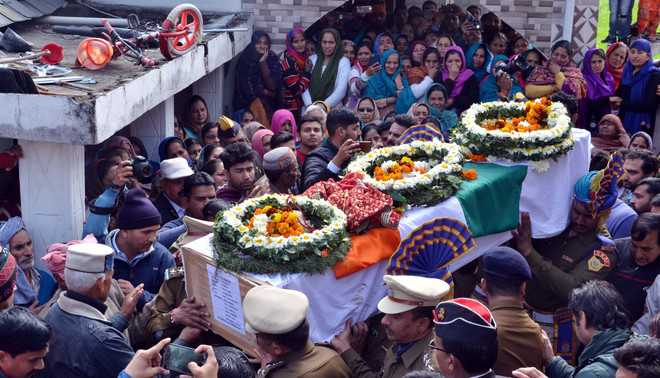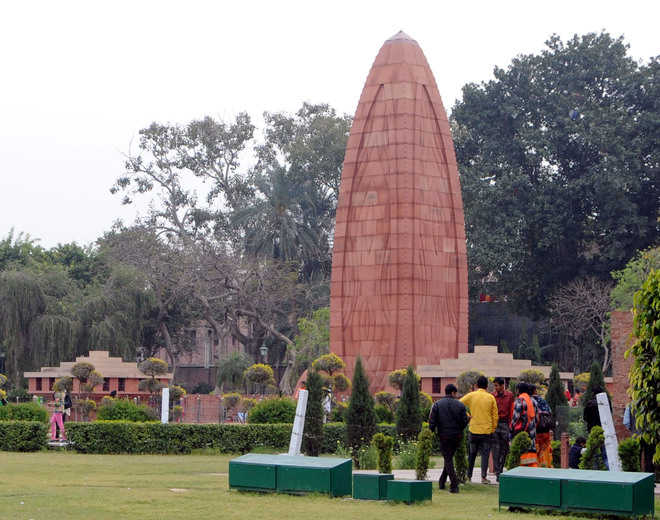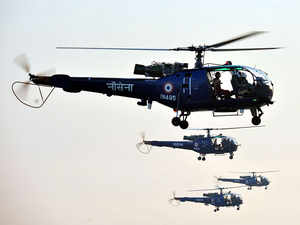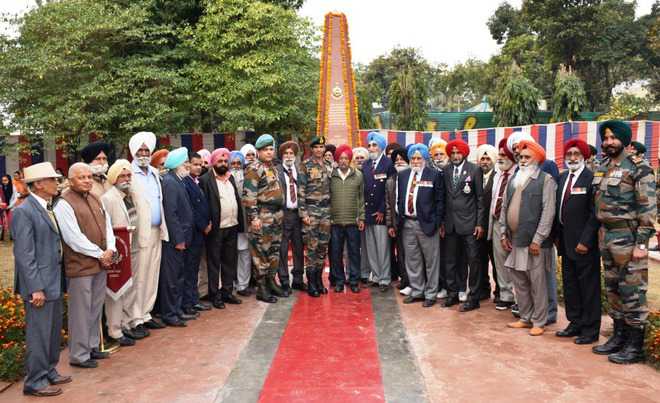
Our Correspondent
Nurpur, February 16
The mortal remains of CRPF jawan Tilak Raj reached his native village in Jawali on Saturday morning. Heart-wrenching scenes were witnessed as relatives and neighbours were unable to console the devastated family.
The mortal remains were received by Transport Minister Kishan Kapoor, Nurpur MLA Rakesh Pathania and Jawali MLA Arjun Singh at the Pathankot Air Force station last night and kept at the PWD rest house in Nurpur.
Chief Minister Jai Ram Thakur laid the wreath on the coffin carrying the remains of the jawan draped in the Tricolour.
The martyr’s three-year-old son, Varun, had no idea what was happening, but seeing others cry, he too started crying.
“The family has lost its bread-winner,” a relative said. Tilak Raj had called his wife Savitri Devi on Thursday morning, just six hours before he was martyred, to tell her that the CRPF convoy had started from Jammu and was on its way to Srinagar. He asked her to take care of his parents and the newborn.
Little did Savitri know that her world would come crashing down in a few hours. The braveheart was cremated with full state honours in the presence of thousands of people, who had gathered there to pay their last respects to the martyr. Slogans against Pakistan were raised. While consoling the martyr’s father, Layak Ram, mother Bimla Devi, wife and other family members, the Chief Minister said Tilak Raj had laid down his life for the nation and in this hour of grief, the state government would extend all possible assistance to the bereaved family.
Baldev Singh, the elder brother of Tilak Raj, lit the pyre. Those present raised solgans “Tilak Raj amar rahe”.
Pulwama attack: Funeral held for Kangra martyr
Tribune News Service
Shimla, February 16
Mortal remains of 30-year-old Tilak Raj, a CRPF trooper who was killed in the Pulwama attack, consigned to flames at his native village in Kangra’s Jawali on Saturday.
Thousands gathered to say their last goodbyes to the martyr as Chief Minister Jai Ram Thakur and Union Health Minister JP Nadda paid their respects. People anger was palpable in the anti-Pakistan slogans they shouted.
The trooper left a wife Savitri Devi and two very young sons—aged 3 and a month-old infant. His brother lit the funeral pyre.
Thakur said the nation shared the family’s grief and was proud of the trooper’s sacrifice. He promised a job to the martyr’s wife as well as possible assistance.




































































